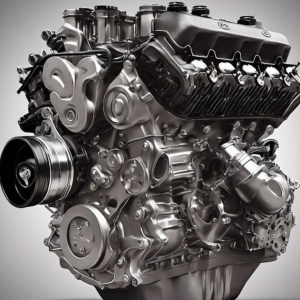In industries such as printing, packaging, textiles, and film production, the precise alignment of continuous material webs is critical for achieving high product quality and minimizing waste. A key technology that ensures accuracy in these processes is edge position control (EPC), a fundamental component of modern web guide systems. By continuously monitoring and adjusting the lateral position of the web, EPC plays a decisive role in improving guiding performance and operational efficiency.
Understanding Edge Position Control
Edge position control is a method used to keep a moving web, such as paper, plastic film, or fabric, accurately aligned as it passes through different processing stages. It relies on sensors to detect the position of the web’s edge and actuators to adjust rollers or guiding devices. The closed-loop feedback system ensures real-time corrections, preventing misalignment that could cause defects such as wrinkles, overlaps, or improper printing.

Role of EPC in Web Guiding Systems
Precision Alignment
EPC allows continuous monitoring of the web edge, ensuring precise alignment even at high speeds. This prevents errors that could accumulate over long production runs.
Minimizing Material Waste
By correcting deviations early, EPC reduces the risk of producing defective material, which directly lowers waste and improves cost efficiency.
Supporting High-Speed Operations
Modern production lines operate at extremely high speeds. EPC enables web edge guiding systems to keep up with these demands, maintaining stability without sacrificing accuracy.
Enhancing Product Quality
In applications such as gravure printing, laminating, or coating, even small misalignments can ruin entire batches. EPC ensures consistent quality across all runs.

Key Technologies in Edge Position Control
Optical sensors: Detect contrast between the web and background.
Ultrasonic sensors: Measure the position of opaque or transparent materials.
Infrared sensors: Effective for non-contact detection with varying web types.

Actuators and Motors
Fast-response actuators and servo motors convert sensor signals into precise mechanical adjustments, enabling quick corrections to web position.
Control Algorithms
Advanced algorithms use predictive modeling and adaptive control to optimize corrections, reducing overshoot and improving stability.
Benefits of EPC in Industrial Applications
Reduced Downtime: Automated correction minimizes manual intervention, lowering the chances of stoppages.
Increased Efficiency: With continuous correction, production lines maintain steady operation without frequent adjustments.
Scalability: EPC systems can be integrated with digital controls, making them adaptable to Industry 4.0 environments.
Versatility: Suitable for a wide range of substrates, from thin plastic films to thick textiles.
Future Outlook
The integration of edge position control with digital technologies such as machine learning, IoT connectivity, and predictive maintenance will further enhance web guiding performance. Smart EPC systems may soon be able to self-calibrate, predict alignment deviations, and optimize corrections autonomously, setting new benchmarks for productivity and quality in web handling industries.






